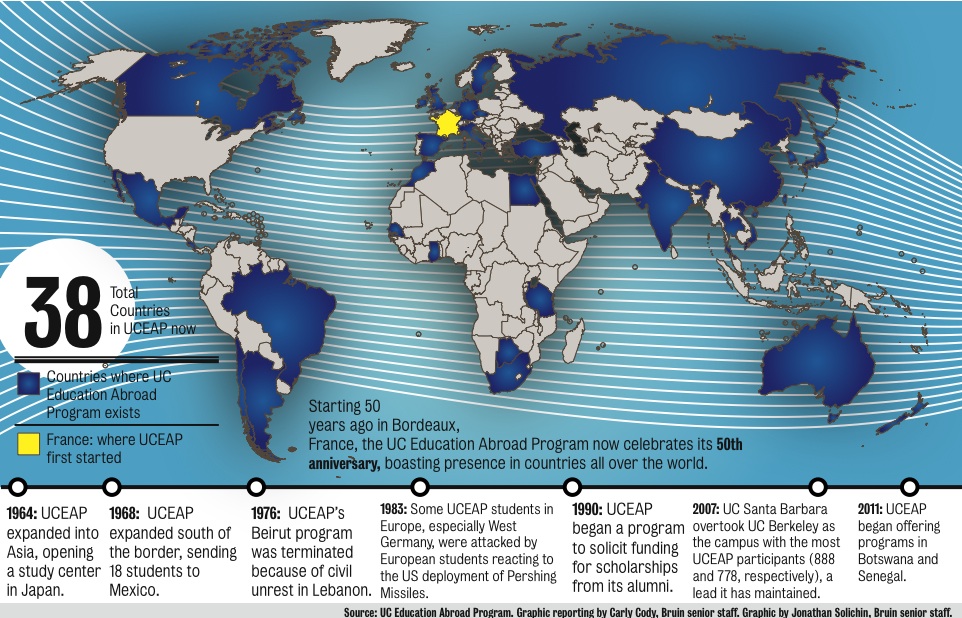Arriving in Bordeaux, France for the first time in 50 years, Skip Nicholson noticed many changes since his first visit to the city with the University of California Education Abroad Program.
The city was cleaner and more attractive, and the transportation system was much easier to use.
“Oh, and people had phones,” said Nicholson, who graduated UCLA in 1964 with a bachelor’s degree in French.
He first traveled to Bordeaux, located in southwestern France, with 80 other people ““ the first batch of UC students to study abroad at a foreign university through the Education Abroad Program.
Nicholson’s visit to France earlier this month was for a four-day event to commemorate the program’s 50-year anniversary.
“We knew that the future of the program depended on how things went with us,” Nicholson said.
The program, which has since served about 86,000 UC students, was created to expose UC students to cultural exchange, a mission that has remained largely the same throughout the past 50 years, said Briana Sapp, senior analyst for the Education Abroad Program director’s office.
The program now offers study abroad opportunities in 38 countries, after expanding from its original location in Bordeaux, France.
Students enrolled in the Education Abroad Program stay enrolled in the UC while they are abroad and retain access to their financial aid packages, Sapp said.
Although the Education Abroad Program still offers traditional year-long immersion programs ““ like the original Bordeaux one ““ there has been a shift toward alternative options in recent years, because of the growing popularity of shorter-term programs abroad.
“We’ve seen a trend in that more students are doing shorter programs instead of attending a foreign university for an entire year,” said Mary McMahon, the regional director of Asia and Africa at the Education Abroad Program.
This trend is likely a response to the current financial climate that has put pressure on students to complete their degrees more quickly, McMahon said.
The program offers more opportunities for students to take classes taught in English and related to their specific major instead of general education or language courses, so they can continue to work toward their degree when abroad, Sapp said.
“Fewer students are taking language courses abroad because they don’t want to take two years to learn a foreign language before doing a program abroad,” Sapp said.
Sapp also said that the program is now offering more internship and laboratory programs because students tend to prefer a more hands-on experience abroad, she said.
Anum Khan, a fourth-year political science student and current Education Abroad Program student ambassador, studied at the University of Manchester in England last fall.
Having been abroad, she said she sees how immersion programs are beneficial.
“I was living like an English student and because that was a new experience, it almost felt like I was reliving freshman year,” Khan said.
While the program itself has experienced changes over the years, there have also been significant changes in students’ experiences abroad.
Khan kept in touch with her family and friends back home through phone calls and Skype while coordinating with other students in the program through a Facebook group, she said.
“We were more cut off from home because the only form of communicating was through letters,” Nicholson said, referring to his experience studying abroad 50 years ago.
Although Nicholson said it took him almost the entire first semester to adjust to lectures taught in French and the currency difference, he said the experience was worthwhile because it exposed him to cultural differences.
Looking ahead, EAP leaders hope to continue offering programs that are conducive to the pressure to complete a degree in four years, while also giving students the opportunity to gain a valuable experience abroad, McMahon said.
Email Cody at ccody@media.ucla.edu.
